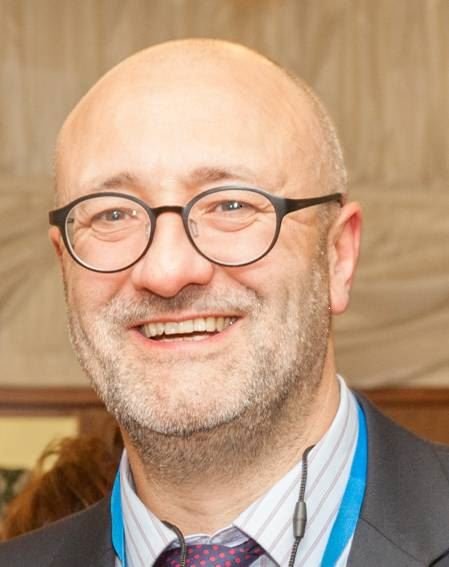Article • ECR session on technology advances
AI and Big Data offer opportunities for radiographers
Advances offered by Big Data and Artificial Intelligence within the healthcare environment are opening up new opportunities for radiographers. Roles in systems development, and being part of the safeguarding aspect by ensuring machine-based bias does not take over patient management, may be performed by radiographers alongside other contributions as AI plays an increasing role in healthcare.
Report: Mark Nicholls
Those opportunities will be highlighted in the ECR 2021 Special Focus Session, “Big data use and governance: top tips for radiographers.”
Role for radiographers

As part of that, Dr Jonathan McConnell will look at the role of radiographers in his talk, “What can big data tell us about our clinical services? Leveraging data from the Scottish National PACS.” It examines the types of data and data assimilations undertaken; how radiographers can become familiar with analysis processes and gain knowledge about the impact of big data analysis. He will also indicate how radiographers can get involved with such initiatives.
The presentation explores these issues against a backdrop of the National Radiology Information and Intelligence Platform (NRIIP) project - part of the Scottish Radiology Transformation Programme (SRTP) - which radiographers are contributing to.
The project also involves IT specialists, radiologists and clerical staff and sees data leveraged from the Scottish National Picture Archiving Communication Systems (PACS) with processes developed to enable local Radiology Information Systems and the national PACS to be interrogated with comparable information collected and stored for meta-analysis at local, regional and national level. Dr McConnell, a Consultant grade Reporting Radiographer with NHS Greater Glasgow and Clyde, explained that the project arose from a need to make disparate data that was traditionally difficult to collect, available for wider use.
Highlighting best practice
A realisation of what AI can be used for, and how it might be best deployed, needs to be foremost in the experience of the radiographer
Jonathan McConnell
Material input into this system is allowing longitudinal analysis - within the context of radiology – of patient journey perspectives, and staffing and equipment availability, as well as creating information to highlight best practice to improve services across Scotland.
In its current form the NRIIP is not a form of AI, but the system can be directed to analyse and merge aspects of service to establish connections. However, he said while radiographers are familiar with AI in areas such as image interpretation and controlling dose in CT examinations, they need to be aware of the strengths and weaknesses of AI systems, and how humans interact with AI for the best patient outcome. “A realisation of what AI can be used for, and how it might be best deployed, needs to be foremost in the experience of the radiographer,” said Dr McConnell, who urges radiographers to become familiar with the analysis process and engage with AI and advanced information systems. “They should embrace what it can do to enhance the role of the radiographer. That may change the way we deliver services and make more of them radiographer-led. This way, the position of the profession will be more strongly recognised within the multidisciplinary team. Big data only has value if it is used well and so radiographers need to be familiar with systems both at a clinical face and as leaders/managers for service development.”
Recommended article

Article • Transferring research into daily routine
AI possibilities and probabilities
Although some people foresee artificial intelligence (AI) easing medical workloads, many challenges arise before that dream can begin. Dr Felix Nensa and Dr Bram Stieltjes described such hurdles in a session held during a SITEM School Symposium in Bern, Switzerland. Whilst AI has potential, actually delivering that asset in to routine medical practice remains a major challenge.
Systems development role
To realise this, he said radiographers must “make themselves heard within the hierarchies of radiology services” and demonstrate they have the background to contribute in areas such as systems development. “Their connection with patients could be the critical interface that prevents machine-based error or bias taking over a patient’s management,” he continued. “Likewise, the radiographer may be the part of the patient journey that could enable bypass of steps within the traditional system, to expedite more rapid management to significantly influence patient outcomes.”
With a take home message underlining how working across professional boundaries is the key to enabling cohesive service delivery, his advice to radiographers is: “Be inventive and tell people about your ideas and hopefully those leading these developments will recognise that talent and want to ensure their team has that capability in it.” However, Dr McConnell urged caution to guard against over expectation, over-reaching, and generation of a negative impact on the role of radiographers but said radiographers must engage with these developments to ensure a safe and equitable service for patients and referrers is achieved.
The Special Focus Session will also include presentations on managing and protecting data, and data-driven decision-making in imaging with AI.
*SF 19 - Big data use and governance: top tips for radiographers. Friday, March 5, 2021 (7.45-8.45pm)
Profile:
Dr Jonathan McConnell is a Consultant grade Reporting Radiographer with NHS Greater Glasgow and Clyde and the clinical lead for Target Operating Model development for the SRTP project which aims to shape the future direction for radiology in Scotland. He is also an imaging manager within the Scottish Clinical Imaging Network and part of a University of Ulster team looking at AI and imaging within the radiography workspace.
03.03.2021










